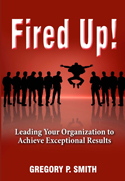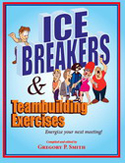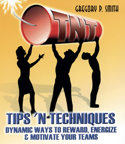The Perfect Storm:
The Impending Workforce Crisis
In the movie, Perfect Storm, a small fishing vessel has the misfortune of encountering the worst Mother Nature has to offer. Just like this boat, today’s employers are facing a combination of conditions just as threatening as this boat faced on the high seas. If businesses don’t prepare today they could face a similar misfortune.
Over the next decade the leadership talent pool (35-44) will be reduced by 9%. That number will further shrink to 10% by 2020 according to the U.S. Census Bureau, International Database.
Tamara J. Erickson, co-author of Workforce Crisis delivered a thought provoking presentation at the recent Society of Human Resource Management (SHRM) conference in June. In her presentation, “New Models of Work: Avoiding the Coming Crisis of the Changing Workforce,” she points to five issues all employers should be concerned with:
Issue One: Not enough bodies. The growth in the working-age population is �screeching to a halt.�
Issue Two: The workforce is getting older. The U.S. population 2000-2010 shows a rapid growth in the over-55 workforce. This means the leadership pool is shrinking.
Issue Three: Inappropriately skilled workers. Over the next decade only 30% of the 21-year-olds will obtain a college degree, while over 90% of the new jobs created in the U.S. will require a college degree. There are plenty of people looking for jobs, but they don’t have the right skills.
Issue Four: A highly diverse workforce. The emerging workforce has diverse values across the following generational groups: Traditionalist; Leading-edge Boomer; Trailing-edge Boomer; Generation X and Generation Y.
Issue Five: Less desire for a leg up. All groups are showing a decline in their desire for greater responsibility.
Some Perspective
With a pattern of declining birthrates, skill shortages, and an increasingly older population, we see a common pattern affecting the workforce of the industrialized world. In the U.S., we have the added situation of �boomers� and �echo-boomers� which indicates changes in the workforce are not going away in this century.
Compounding the issue during the next decade only 30% of twenty-year-olds will obtain a college degree. The bottom line is HR will have to change the �requirements� of job descriptions to �desires,� and employers will need to spend more time educating and training their workforce. That is according to Tamara J. Erickson, co-author of Workforce Crisis.
Additionally, organizations face increased ethnic, generational, and racial diversity. These diverse values and generational differences place greater demand on managers and leaders. They need to be managed and led in a different manner. Sadly, the educational system is not prepared for a knowledge economy needed to produce high-performance in organizations. Employers will have to fill the gap. They also need to be looking at ways to converge HR and training as a standard practice to keep pace in a highly complex labor market. Organizations need to be gearing up for this now.
Are your managers and leaders able to cultivate the diverse talents of diversity, generational differences, and shifting talents?
Will they be able to lead teams to increased productivity and high-performance?
Have you put plans in place to increase professional development in your organization? If your answer is no, or you are not sure, you may have a greater reason to be concerned.
A Solution
Cultivate the potential of each person. Build greater flexibility in your work hours. Discover what satisfies and dissatisfies each generation. I assured a client recently that engaging in a retention plan to address this issue would put her organization in a better position to gain than lose her workforce to retirement or the competition. Her organization is already seeing the boomers looking for greater flexibility in taking time off for leisure. But, at the same time, they want to stay employed. Meanwhile, the 35-45 year olds are looking for more family time and are less willing to take on greater responsibility.
I recommended a plan that combines the following:
1. Start with a sound hiring strategy for the best talent that meets or exceeds current and future needs.
2. Create a plan for retaining new and identified existing talent in the organization.
3.Examine workplace dimensions such as leadership, communication, training, and recognition.
4. Examine, train, and coach with a leadership style for existing managers and for up-and-coming leaders in the 25-34 year-old group that focuses on:
–Maintaining and enhancing team member self- esteem.
–Focusing on behavior (what team members do rather than their attitudes or personal characteristics).
–Encourage team member participation in decision making and problem solving.
Fortunately, there is still time to act in putting your organizational plan in place.
Recognize the world around you is changing. It includes the new millennium workforce that has totally different needs and expectations. It is about adapting. Prepare now and avoid being caught in the skilled labor storm.
No related posts.















